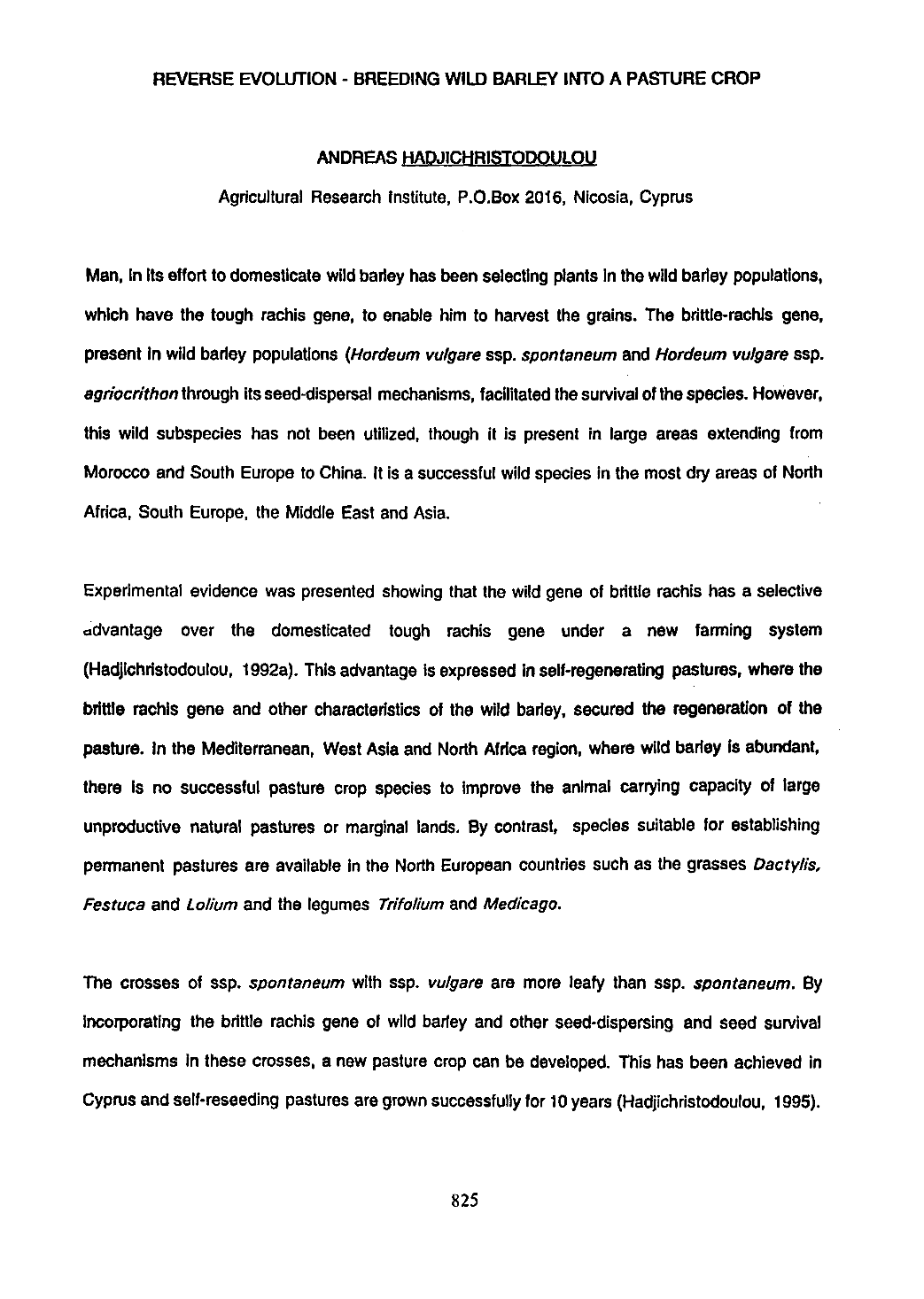

REVERSE EVOLUTION - BREEDING WILD BARLEY INTO A PASTURE CROP
ANDREAS HADJICHRISTODOULOU
Agricultural Research institute, P.O.Box 2016, Nicosia, Cyprus
Man, in its effort to domesticate wildbarley has been selecting plants inthe wildbarley populations,
which have the tough rachis gene, to enable him to harvest the grains. The brittle-rachis gene,
present in wild barley populations
(Hordeum vulgare
ssp.
spontaneum
and
Hordeum vulgare
ssp.
agriocrithon
through itsseed-dispersal mechanisms, facilitated the survival ofthe species. However,
this wild subspecies has not been utilized, though it is present in large areas extending from
Morocco and South Europe to China. It is a successful wild species In the most dry areas of North
Africa, South Europe, the Middle East and Asia.
Experimental evidence was presented showing that the wild gene of brittle rachis has a selective
advantage over the domesticated tough rachis gene under a new farming system
(Hadjichristodoulou, 1992a). This advantage is expressed inself-regenerating pastures, where the
brittle rachis gene and other characteristics of the wild barley, secured the regeneration of the
pasture. In the Mediterranean, West Asia and North Africa region, where wild barley is abundant,
there is no successful pasture crop species to improve the animal carrying capacity of large
unproductive natural pastures or marginal lands. By contrast, species suitable for establishing
permanent pastures are available in the North European countries such as the grasses
Dactyfis,
Festuca
and
Loiium
and the legumes
Trifolium
and
Medicago.
The crosses of ssp.
spontaneum
with ssp.
vulgare
are more leafy than ssp.
spontaneum .
By
incorporating the brittle rachis gene of wild barley and other seed-dispersing and seed survival
mechanisms in these crosses, a new pasture crop can be developed. This has been achieved in
Cyprus and self-reseeding pastures are grown successfully for 10years (Hadjichristodoulou, 1995).
825
Научная электронная библиотека ЦНСХБ









